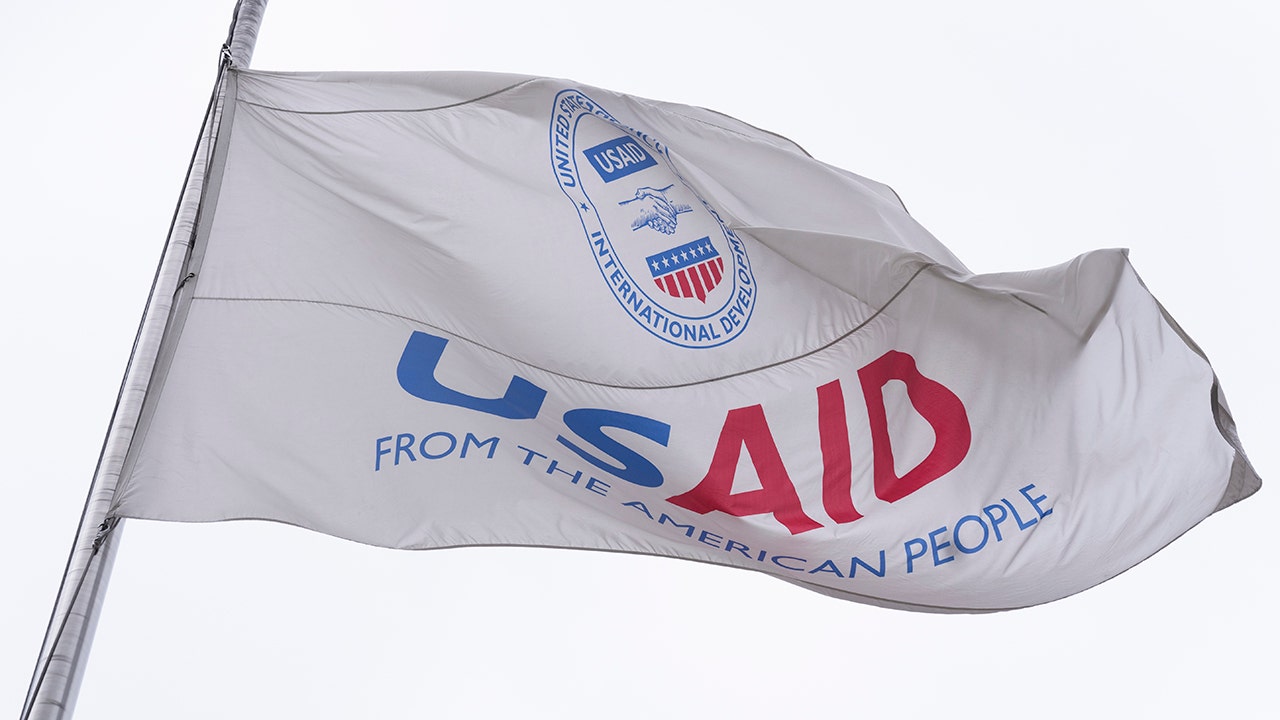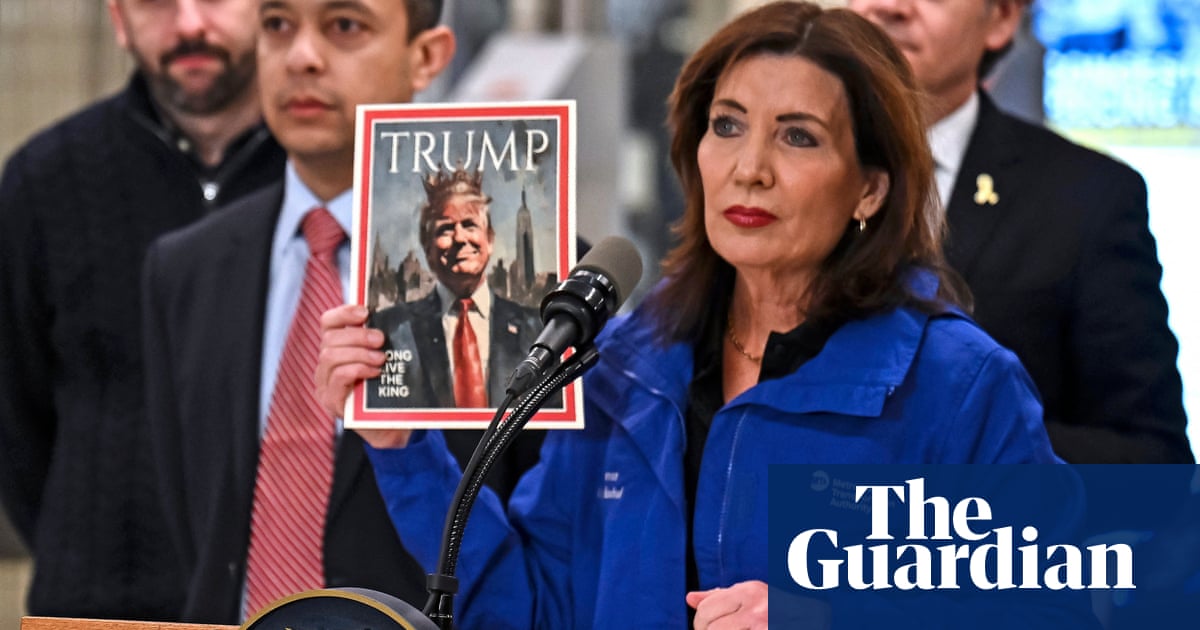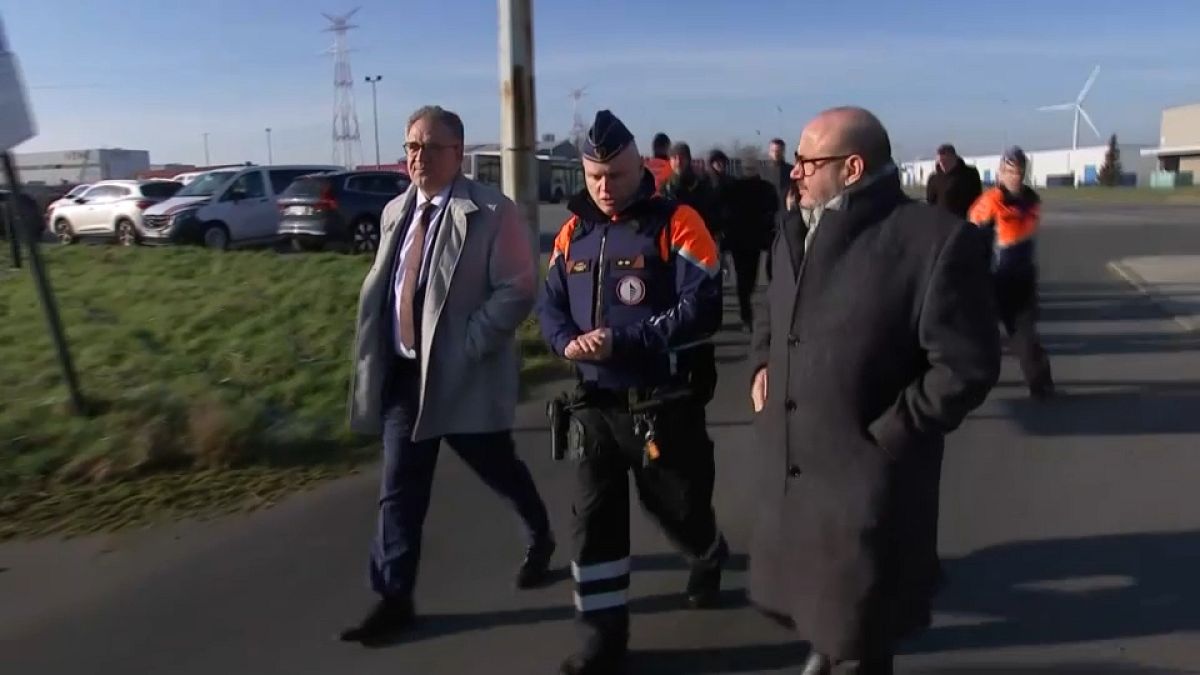Business
Waymo is getting ready to tackle Los Angeles' freeways. How have the robotaxis fared so far?

Waymo’s fleet of electric, self-driving taxis has been on the streets of Los Angeles for a few months now. And in a post on X this week, the company announced it was set to take on the most L.A. of frontiers: the freeways. At first, only Waymo employees will be able to ride along as the driverless SUVs navigate the 10 or the 405 and the company did not say when it expects to open up the new terrain to paying passengers.
After launching in San Francisco and Phoenix, Waymo arrived in Los Angeles in November. It attracted an initial wait list of around 300,000 people before becoming available to anyone who downloaded the service’s app, a company spokesperson said. Expansion plans include Atlanta, Miami and Austin, according to the company’s website.
Waymo has already driven 1.9 million miles in Los Angeles. Its short history, perhaps inevitably, hasn’t been without some bumps that have raised concerns and prompted a series of National Highway Traffic Safety Administration investigations. Last month, for example, a customer posted a video of the Waymo he was riding in repeatedly driving in circles and deviating from the set route, he said. The customer was delayed for five minutes and then driven to his destination, Waymo told The Times.
How did Waymo make it to Los Angeles?
Waymo operates around 100 taxis in Los Angeles, which are currently confined to a 79-square-mile area that spans from Santa Monica and Marina del Rey to West Hollywood and downtown Los Angeles. Until the announcement this week, the taxis had been programmed to steer clear of highways and freeways within the city.
The company got its start as the Google Self-Driving Car Project, which began in 2009 and put its first autonomous car on the road in 2015. The project rebranded as Waymo in 2016 under Google’s parent company Alphabet and launched its driverless ride-hailing service known as Waymo One in 2020.
Before coming to L.A., Waymo launched in Phoenix and San Francisco, where collectively the vehicles have driven tens of thousands of riders more than 30 million miles without a human driver.
Waymo spent months testing vehicles in Los Angeles with humans in the driver’s seat before launching fully autonomous service, available 24/7 through an app that functions similarly to Uber and Lyft.
How safe are Waymo vehicles?
Waymo’s stated goal is to reduce traffic injuries and fatalities through autonomous driving technology, which they describe on their website as “the world’s most experienced driver.” Although incidents involving Waymo vehicles generate attention, the vehicles are safer than human drivers, according to data collected by insurer Swiss Re.
Based on data collected by Waymo, their driverless vehicles had 81% fewer airbag deployment crashes, 78% fewer injury-causing crashes and 62% fewer police-reported crashes than traditional vehicles driving the same distance. Waymo vehicles rely on cameras, sensors and a type of laser radar called lidar to operate autonomously.
Despite its solid track record, there have been several accidents and technological blips since the rollout of Waymo One. The company recalled 444 vehicles last February after two minor collisions in quick succession, and the NHTSA opened an investigation in May into 31 incidents that raised safety concerns.
A Waymo taxi collided with a cyclist in San Francisco last year and another vehicle crashed into a pole in Phoenix in May. Customers have reported various glitches on social media, including one Reddit user who posted a video of a Waymo driving the wrong direction into oncoming traffic.
The company has also faced scrutiny over security concerns after members of the public have interfered with the vehicles, damaged them and attempted to steal them. In October, two pedestrians stalled a Waymo by standing in its path and demanded the customer give them her phone number.
Earlier this month, a man in downtown Los Angeles got in the driver’s seat of a Waymo vehicle and attempted to drive off before being stopped by police.
What happens when something goes wrong?
While riders can contact a human Waymo representative by clicking a button during their trip, some have taken to social media to report their dissatisfaction with the company’s problem-solving abilities and customer service.
Mike Johns, a Los Angeles man who got stuck inside a circling Waymo in Arizona, said the person who answered his help call was not able to immediately get his vehicle to pull over. Another customer in San Francisco said they waited more than 45 minutes for roadside assistance after their Waymo malfunctioned and stopped its trip.
Waymo vehicles cannot be controlled remotely by a human, the company said, but trained drivers can operate a vehicle in-person when necessary. The company also has a “fleet response” program that allows human agents to communicate directly with vehicles in challenging situations.
According to the company, if a Waymo encounters a situation it cannot navigate, it is programmed to contact a human fleet response agent who will evaluate the Waymo’s surroundings and provide the vehicle with assistance on how to proceed. In some cases, a human can remotely map a route for a Waymo to take to avoid an obstacle.
Has the company had success?
Waymo, which operates more than 100,000 paid rides each week and has around 700 white Jaguar I-PACE SUVs across its markets, was valued at more than $45 billion in November after its latest round of funding.
By putting fully self-driving vehicles on public roads, Waymo has achieved what Elon Musk and Tesla have not yet been able to. Musk often exaggerates the abilities of the so-called Full Self-Driving mode available in Teslas, which cannot function without a human driver present. Musk unveiled a prototype for an autonomous Cybercab in October, but it’s not clear when the product will launch.
Waymo once faced competition from Cruise, a driverless taxi company founded in 2013, but the company was effectively shut down last month when its owner, General Motors, said it would stop investing in its self-driving vehicles.
Cruise’s demise followed a grisly crash in San Francisco in 2023, in which a driverless Cruise vehicle struck a woman and dragged her for several feet, causing critical injuries. The company suspended all operations after the incident, but began testing with a human driver present several months later in Phoenix, Houston and Dallas.

Business
The Cryptocurrency Scam That Turned a Small Town Against Itself

In the Wichita courtroom, Hanes offered his only public reflection on the bank collapse. Wearing a gray suit, he walked up to the lectern, glancing nervously at his former friends in the gallery. “I’m sorry,” he told the judge. Until the very end, he explained, he thought he was involved in a legitimate business deal. In January 2024, he told the court, he made a futile attempt to recoup the lost money, flying to Perth, Australia, where some of his nonexistent business partners had supposedly been based. He was in touch with them until the moment he landed at the airport. But no bailout materialized. It was only then, months after the bank shuttered, that he accepted he had been tricked. “I’ll forever struggle understanding how I was duped,” Hanes said. “I should have caught it, but I didn’t.”
After Hanes finished speaking, Judge Broomes rocked backward in his chair and turned to face the shareholders. “The best thing for you is to forgive this man,” he said. “Leave matters of retribution to me. That’s my job, and I’ll see that it’s done.” He sentenced Hanes to 24 years and 5 months in prison, a punishment even greater than federal prosecutors had requested. A chorus of yeses echoed from the shareholders.
Hanes’s shoulders slumped. As two U.S. marshals approached him, he undid his tie, slipped off his suit jacket and emptied his pockets. Behind him, the shareholders went quiet. Hanes’ sister and one of his daughters clung to each other, their sobs breaking the silence. Hanes looked at them once, quickly, before the marshals handcuffed him and led him out of the room.
One day last October, Tucker got a call from an investigator at the F.B.I. It was good news: Federal officials had recovered $8 million of the stolen funds, which had been hidden in an account full of Tether, a popular cryptocurrency. The stash was a small fraction of what Hanes stole, but it would be enough to reimburse the shareholders for nearly all the money they had invested in the bank.
The jubilation Tucker might have expected to feel was tempered by sadness. His father had been in and out of the hospital, and a doctor warned that he had only days left to live. That night, Tucker went to his father’s hospital room and shared what he had heard. Bill Tucker blinked a few times and then said, “Oh, my.” He died a week later.
Business
L.A. fast food workers call on city officials to approve 'fair work week' law

A group of Los Angeles fast food workers walked off the job Tuesday to urge city officials to approve a law that would give them more control over their work schedules.
Fast food workers have long complained of unstable schedules that make it difficult to plan their finances, child care, medical appointments and other obligations.
Los Angeles City Councilmember Hugo Soto-Martinez introduced an ordinance last year that aims to give these workers more stability and consistency in scheduling, but the council has yet to vote on the measure.
The proposal would expand the reach of the city’s existing Fair Work Week law — which requires that employers give retail workers their schedules in advance — to include some 2,500 large chain fast food restaurants that employ roughly 50,000 workers.
More than 60 fast food workers rallied outside City Hall at around 11 a.m. Tuesday sporting purple union T-shirts and carrying “on strike” signs printed in Spanish and English.
The rally was planned by California’s statewide union of fast food workers, which formed last year. The California Fast Food Workers Union is affiliated with the Service Employees International Union, which for years has helped to organize fast food employee walkouts over wage theft, safety and pay.
Lizzet Aguilar, 44, a cashier at a McDonald’s in the downtown L.A. area, said she was scheduled for a three-hour shift Tuesday that she skipped to join the rally.
Aguilar said she was scheduled to work only two days this week, with each shift just three hours long.
Having so few hours, she said, makes it difficult to contribute to her household finances and care for her 10-year-old son, whom she brought with her to the rally.
“This isn’t fair. We can’t survive on this,” she said.
Several workers from a Wingstop in Westwood also participated in the rally.
Edgar Recinos, 32, a cook at the Wingstop who earns $20 an hour, said he struggles to pay his rent when his schedule and hours change weekly.
Recinos said he was scheduled last week for 30 hours, but this week he’s scheduled for 17 hours, he said, adding that he works a second job at a smoothie store.
“It makes no sense,” Recinos said. “It’s an unstable situation.”
The tentative ordinance also includes an annual mandatory six-hour paid training to help educate workers on their rights. And it would require that fast food workers accrue an hour of paid time off for every 30 hours they work — on top of paid sick leave to which they are already entitled.
The Fast Food Workers Union cited a recent report published by labor researchers at Northwestern and Rutgers that found 1 in 4 fast food workers were illegally paid below the minimum wage. Additionally, these workers lose almost $3,500 a year, or about 16% of their income, because of this persistent wage theft in the industry, the report said.
Legislation related to boosting worker protections typically doesn’t face substantial opposition from the L.A. City Council. However, the process can take time and the matter must first be heard by the council’s economic development and jobs committee before going to the full city council for a vote.
A measure to boost wages for hotel and airport workers, for example, was introduced by city councilmembers in April 2023 and was finally approved more than a year and a half later, in December 2024.
Business
Why Everyone Is Still Talking About ‘Paddington 2’

“Paddington 2 is the greatest film ever made,” one user posted on X in 2022.
This tweet was not ironic.
In the seven years since its release in January 2018, the film about a marmalade-loving bear’s quest to find the perfect gift for his beloved aunt has become an internet phenomenon, spawning memes, think pieces and an endorsement from Nicolas Cage. For a time, it was the best-reviewed film ever on the aggregator site Rotten Tomatoes.
“A very eclectic group of people respond to it in the way that they do,” David Heyman, a producer on “Paddington 2” and its 2015 predecessor, “Paddington,” said in a recent phone conversation from his home in London. The Mexican filmmaker Guillermo del Toro, for example, confessed to Heyman he was a fan.
Now with the third feature-length installment in the franchise, “Paddington in Peru,” in theaters — and already having passed the $100 million milestone at the international box office — it is hard to imagine that when “Paddington 2” first arrived in theaters stateside, it was only a modest box office success. Since its DVD and streaming releases, a devoted community of online fans has sprung up around it, evangelizing about the outsider bear who brought joy to their lives.
“There’s humor in it for adults; there’s humor for children,” said Heyman, who grew up reading the Paddington books, written by the British author Michael Bond. “It never feels patronizing or like it’s talking down to its audience. It has a big, beating heart.”
All three films are based on the children’s books about the duffle-coated, hard-staring bear, first published in 1958. In the first movie, Paddington emigrates from Peru to London in a story inspired by the World War II rescue operation that brought nearly 10,000 children from Nazi-occupied Europe to England. The second film, directed by Paul King, who wrote the script with Simon Farnaby, is an action adventure with stunning set sequences, following Paddington through a court trial, a prison escape and a daring pursuit by train.
Securing the return of the original film’s cast members — the gentle-voiced Ben Whishaw as Paddington, Hugh Bonneville as the hapless but well-meaning Mr. Brown and Sally Hawkins as the openhearted Mrs. Brown — was easy, Heyman said. And bringing in a dream team of new ones — Hugh Grant as the ridiculously campy villain, Phoenix Buchanan — was also a breeze.
“Hugh knows a good part,” he said, laughing.
King’s confidence as a director grew from the first film to the second, Heyman said, as he became more comfortable with the bevy of visual effects required to create the C.G.I. bear, who was represented during filming by a toy bear head on a stick.
“There was a lot more time to focus on the script and on working with the actors,” Heyman said. “It was really fun. The spirit of the film was reflected on set.”
That was maybe most evident in the rollicking Busby Berkeley-style dance number that unspools inside the prison as the end credits begin to roll. Locked up for 10 years for his scheme to frame Paddington for stealing a pop-up book, Phoenix, a former actor, finally gets his star turn. He leads the roughly 300 other prisoners in a tap number set to “Rain on the Roof” from Stephen Sondheim’s musical “Follies.”
“Hugh was all in,” said the choreographer Craig Revel Horwood, who created the 90-second number, which was shot in sections over 19 hours the day before the set was to be demolished. He recruited 300 of his tattooed, heavyset professional dancer friends to make up the corps.
“Anyone that looked rough, we were putting in,” said Horwood, who spent about a month planning the number, including three weeks teaching Grant to tap dance. “I had no problem getting anyone for the gig. Not one person turned me down.”
He outfitted the scruffy-looking extras with pastel umbrellas and size XXL bedazzled pink-striped uniforms — “when I saw everyone in costume, I was killing myself laughing,” he said — then shot from sunup to sundown, squeezing in the last few takes as a midnight deadline approached.
“It’s sort of a Momma Rose in ‘Gypsy’ moment,” he said. “‘Everything’s Coming Up Roses,’ that type of number.”
The same could not be said for the film’s initial U.S. box office receipts. Though “Paddington 2” had been a big success in Britain, it struggled to separate itself from the pack over a Martin Luther King Jr. holiday weekend, grossing a modest $15 million on a $40 million budget, according to the data site Box Office Mojo.
One challenge, Heyman explained, was that the Weinstein Company, which initially held partial North American distribution rights for the film, was in a fiscal crisis exacerbated by the numerous sexual assault allegations leveled against Harvey Weinstein, its co-founder and former co-chairman. On the verge of filing for bankruptcy, the company did not sell the rights to Warner Bros. until less than two months before the film’s release date.
“So Warners had one hand tied behind their back in terms of marketing,” Heyman said.
Eventually, strong reviews, including from this newspaper, and word-of-mouth praise helped the film in the United States, but it never attained the success that it had in Britain, where it would go on to become the sixth-highest-grossing film of 2017, according to Box Office Mojo.
That is, until “Paddington 2” became available to watch on Amazon Prime Video in March 2018 and then became a streaming hit in 2020 during the coronavirus pandemic.
“The film shows what can be if people have more empathy towards one another,” said Jason Chou, 28, a Los-Angeles-based visual effects artist.
But not everyone saw a generous spirit in King and Farnaby’s version of the classic bear.
One odd footnote to the reputation of “Paddington 2” appeared in a blog a few years after the film came out. The movie had a solid perfect score on Rotten Tomatoes. Suddenly, in 2021, it dropped to 99 percent after a freelance film critic wrote on his blog that he had given “Paddington 2” a negative review on BBC Radio in 2017 (no one has been able to find that review).
The blogger, Eddie Harrison, wrote that he had grown up reading the Bond books, and that in “Paddington 2,” the bear’s “charm is entirely missing,” and he has “evil, beady eyes and ratty fur.”
“This is not my Paddington Bear,” he added, “but a sinister, malevolent imposter who should be shot into space, or nuked from space at the first opportunity.”
Within twelve hours of his blog post in May 2021, he became Public Enemy No. 1 for the Paddington hive. And hours after the score dropped, The Hollywood Reporter published an article about the downgrade, with dozens of news outlets following.
Why did Harrison bother?
“I recognised that a revised critique would knock Paddington off a perfect RT score,” Harrison wrote on his blog, the Film Authority, in an account of the fallout. But he hadn’t, he noted, anticipated the intensity of the vitriol, which, he said, included doxxing and vandalism, as well as death threats.
“It’s just an opinion, man,” said Harrison, who labeled “Paddington in Peru” “passable but rather ordinary.”
Heyman certainly maintains a different take on “Paddington 2,” one shared across the internet, even as the third film, which follows the bear back to Peru, has garnered lukewarm reviews.
“The second one is about looking for the good in people,” Heyman said, “because if people find it, then they’ll be able to find it in themselves.”
“In a time of life with cynicism, Paddington is a remarkably generous-spirited, uncynical character,” he added. “And the film reflects that.”
-

 Culture1 week ago
Culture1 week agoThe Eagles defense couldn’t stop Mahomes in 2022. In Super Bowl 59 they got their revenge
-

 News1 week ago
News1 week agoMotley Crue lead singer Vince Neil's plane rams into parked jet at Arizona's Scottsdale Airport – The Times of India
-

 Politics1 week ago
Politics1 week agoUSAID inspector general fired days after publishing report critical of aid pause
-

 News1 week ago
News1 week agoSnow and ice blanket parts of the northern U.S., and more winter weather is on the way
-

 News1 week ago
News1 week agoHUD is bracing as DOGE seeks to cut waste, fraud. Union leaders have a suggestion
-

 Technology1 week ago
Technology1 week agoFCC to investigate Comcast for having DEI programs
-

 World1 week ago
World1 week agoBellingham strikes late as Real Madrid pile misery on Man City
-

 Sports1 week ago
Sports1 week agoFootball and social media: What next for players and clubs in a changing landscape?














